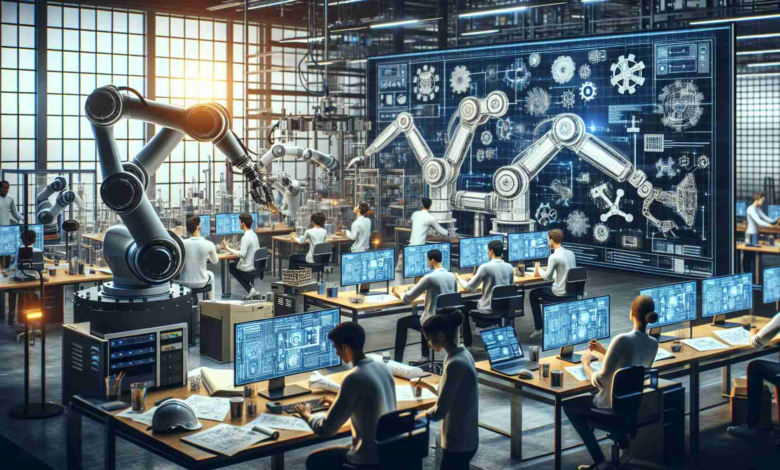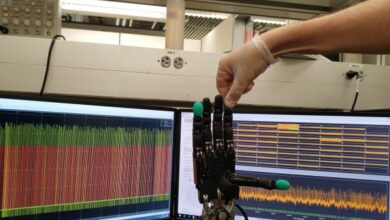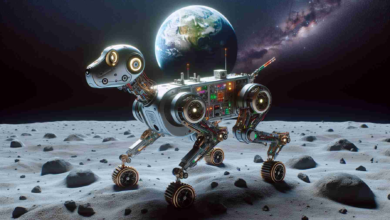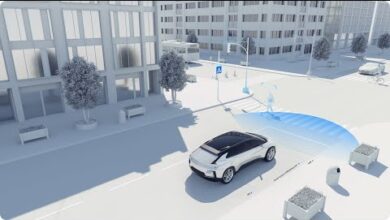A Look Into Pioneering Robotics

In an era where technological advancements are propelling societies into the future, groundbreaking developments in robotics have taken center stage. The industry’s progress was highlighted in a recent report, showcasing the strides being made in automated systems and AI.
In an article by Kevin Kayhart for Dailymail.com, published just after midnight at 00:58 EDT and promptly updated at 01:07 EDT on April 6, 2024, readers were informed of the latest robotic innovations that are set to redefine human interaction with technology. While the piece provided an overview of the recent tech trends, here we delve deeper into the implications of these robotic achievements.
The advancements in question reflect not just a leap in engineering and programming, but also a shift in how robotics might be integrated into daily life, making tasks more efficient and pioneering new methods of human-machine collaboration. Scientists and engineers behind these developments argue that the future being built by robotics is one that will augment human capabilities and create opportunities for growth in various sectors, from healthcare to manufacturing.
These innovations could potentially usher in an unparalleled era of productivity and precision, bringing about substantial changes in the workforce and in everyday living. As researchers continue pushing the boundaries of what’s programmable, the narrative forming is not just about the technology itself, but about the future it’s helping to craft—one where robots are allies in shaping a smarter, more capable society.
The Robotics Industry and Market Forecasts
The robotics industry is undergoing an extraordinary expansion and transformation, with many sectors actively investing in robotic systems. A significant contributor to this growth is the ongoing improvement in artificial intelligence, which is making robots smarter and more capable of handling complex tasks. This symbiosis between AI and robotics is creating new use cases and applications that were once considered the stuff of science fiction.
According to market research, the global robotics market is expected to continue its upward trajectory. A recent report by Statista predicts that the worldwide spending on robotics and drones solutions will reach $241.4 billion by 2023, indicating the increasing investment and confidence in these technologies. The compound annual growth rate (CAGR) for robotics is also expected to be substantial, pointing toward a robust and dynamic market.
Industries Embracing Robotics
The healthcare industry, for instance, is a prime beneficiary of robotic innovations. Surgical robots, like the da Vinci Surgical System, have been trailblazers in performing complex surgeries with high precision levels. There’s also a growing demand for robotic assistance in elder care and rehabilitation, where robots are used to aid in patient movements and therapy.
Another significant impact of robotics is evident in the manufacturing sector, where automation is critical in increasing production volumes while maintaining quality. Robots in assembly lines and warehouses are now common sights, and their presence is expected to grow as they become more adaptive and collaborative.
Retail and logistics are also on the frontier of adopting robotics, with companies using automated systems to manage inventories, enhance the efficiency of supply chains, and improve customer experience.
Issues and Challenges in the Robotics Industry
The increased adoption of robots raises several issues, including the impact on employment. While robots bring productivity and efficiency, they also threaten to displace workers in certain roles. A careful balance must be established between leveraging the benefits of robotics and ensuring that the workforce is not left behind, perhaps through reskilling initiatives and education.
Moreover, cybersecurity becomes an even more critical concern as robots are integrated into various aspects of life and work. Ensuring that robotic systems are secure against hacking and other cyber threats is paramount to maintain trust and safety.
Conclusion
Robotic innovations are not just shaping the future of industries but also redefining human interaction with technology. As the industry continues to flourish, the role that robots play in society will become more integral, supporting and enhancing human capabilities across a spectrum of activities. The potential is vast, but so is the responsibility to navigate this evolution conscientiously and equitably.
For further information on the industry as a whole, reputable sources such as the International Federation of Robotics provide data and analysis that could deepen understanding: International Federation of Robotics. Additionally, for a broader perspective on market research and forecasts, entities like Statista offer valuable insights: Statista. It’s essential to continue monitoring and discussing these trends as they develop, ensuring that the robotics industry’s growth is beneficial for all of society.

Michał Rogucki is a pioneering figure in the field of renewable energy, particularly known for his work on solar power innovations. His research and development efforts have significantly advanced solar panel efficiency and sustainability. Rogucki’s commitment to green energy solutions is also evident in his advocacy for integrating renewable sources into national power grids. His groundbreaking work not only contributes to the scientific community but also plays a crucial role in promoting environmental sustainability and energy independence. Rogucki’s influence extends beyond academia, impacting industry practices and public policy regarding renewable energy.



